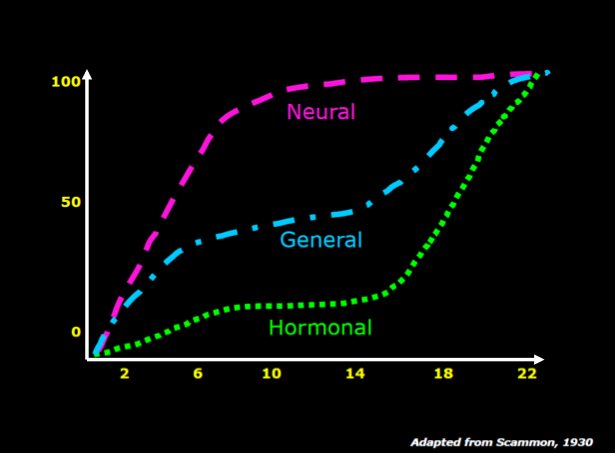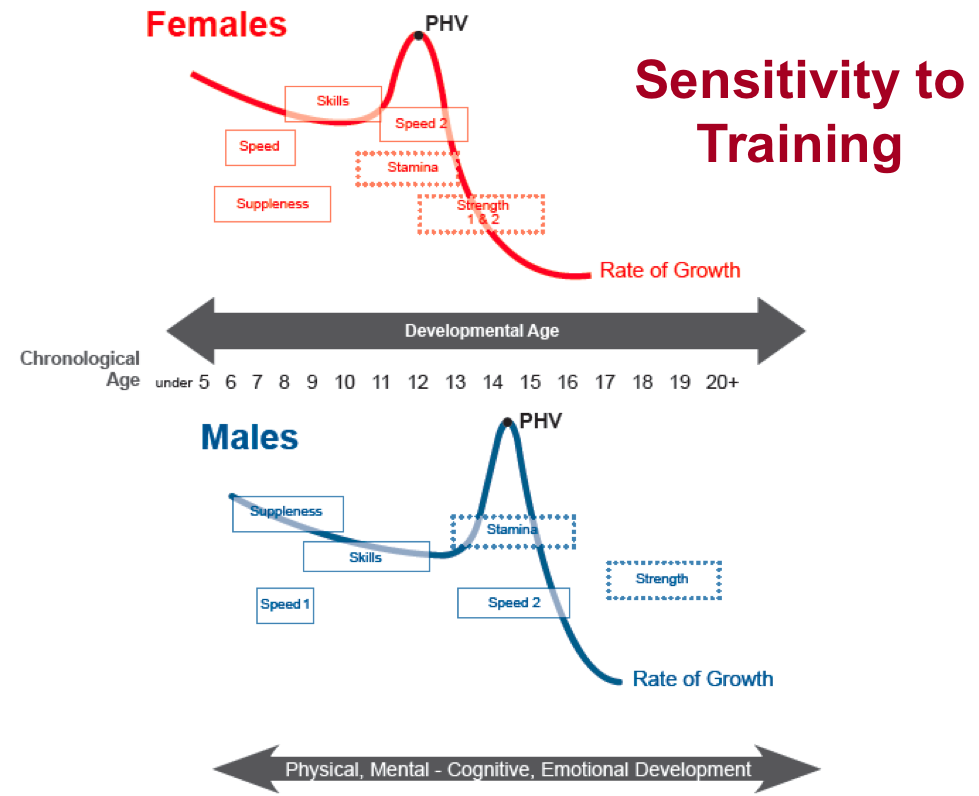Every year I come across parents that are concerned about their kids lifting weights. Typically the kids are 13-14 years old or younger, and the parents (or in some cases the coaches) are under the impression that lifting weights at this age is inappropriate. Because this is such a pervasive feeling, I want to dive into this topic and point out some of the lesser discussed ideas that are pertinent in deciding whether weight training is appropriate for younger kids.
First off, let’s rename “weight training” to what it really is “resistance training.” Weights are simply one form of resistance, of which there are plenty, and any discussion on weight training would be misguided without mentioning that there are other ways to load the body to add resistance. This distinction will be important moving forward.
The biggest concern most parents have about resistance training for young athletes, rightfully so, is whether it is safe or not. You, like me, have probably heard that no one should lift weights until they’re at least 13 years old. This idea has two origins:

To address the first issue, the National Strength and Conditioning Association (NSCA) put out a position statement years ago stating that resistance training is safe for kids as young as 6. Even at 6, the concern is mostly social and psychological, not physical. The concern that kids will fracture growth plates and stunt their growth is entirely unfounded (e.g. to my knowledge, less than 2 documented cases in the history of documented evidence). There are more reports of kids being rushed to the hospital from complications related to consuming energy drinks in the last year than there are of fractured growth plates EVER. In other words, fractured growth plates and stunted growth is not a legitimate concern. Simply, it does not happen.
It’s also important to remember that sometimes resistance training can be a way to DELOAD body weight. For example, performing a push-up requires pushing ~75% of an individual’s body weight. For a 100lb kid, this is ~75 lbs. While many parents are fearful of lifting weights, they’re in full support of body weight exercises such as push-ups, chin-ups, lunges, etc. The reality is that most kids aren’t strong enough to do very many QUALITY push-ups with good technique, and performing a dumbbell chest press (a bench press movement with dumbbells) with 2 x 15lb dumbbells can be an effective tool in improving the kid’s upper body strength in this pattern, along with a number of other benefits. External load often gets mistaken for internal load, which leads to underestimating how stressful certain body weight activities really are. As another example, the stress going through the kids’ bodies when they sprint full speed on the ice with ~10+ lbs of equipment on and stop sharply to change direction are higher than those resulting from doing lunges holding light dumbbells. Furthermore, research documenting injury rates from different sports shows that injury rates are DRASTICALLY higher in common youth sports like soccer, hockey, football, etc. than they are in weightlifting. In other words, in addition to growth plate fractures and stunted growth not being a serious concern, resistance training is actually incredibly safe when performed with proper progression and coaching.
If you look at Long Term Athletic Development models, you’ll see that kids around 12 years old are in a “sensitive period” for the development of speed and conditioning. Simply, this means that they can improve in all athletic areas (speed, power, strength, balance/coordination, movement efficiency, conditioning, etc.), but speed and conditioning are the qualities that will experience accelerated rates of improvement. Speed comes down to putting force into the ice (or ground) quickly. High force output and explosive movements rely heavily on “high threshold” motor units or “fast twitch muscle fibers”. One method of training these units/fibers is through resistance training. If you look back up at the graph above, you’ll notice that while hormonal development is still low at this age group, neural development is actually quite high. This means that the nervous system, which governs all qualities of movement ranging from the athlete’s movement patterns in general through the athlete’s ability to active their musculature to the greatest extent possible, is primed for “learning” and development at this age. If you can increase the athlete’s ability to produce force, they get faster. That is one reason why resistance training is appropriate for athletes at this level; it can capitalize on a huge open window of neural development to help teach kids how to move with better alignment/body awareness AND to teach them to active their musculature to a greater extent, resulting in increases in strength, power, and speed.

Sensitive Periods During Development, taken from USA Hockey’s ADM
From a conditioning perspective, adding load to someone that is proficient in a movement increases the heart rate response to that exercise. This is fairly intuitive. If you walk 50 yards, it’s not very taxing. If you walk 50 yards holding 60 lb dumbbells, your heart rate goes much higher. In other words, while people view “weight lifting” strictly in terms of improving muscle size (unlikely at 12) and muscle strength (possible to an extent), the reality is that there is much more to it. Resistance training at this age can be used as an effective tool to create a cardiovascular response. This is one reason why we pair lower and upper body exercises; it necessitates blood flow/circulation to the entire body.
With this understood, the question of how much resistance is appropriate comes to mind. For example, is it appropriate for a 12 year old to do an exercise like lunges with 30 lb dumbbells? If an athlete can do body weight lunges perfectly, giving them 10 lb dumbbells increases the load, requires more of a muscular force output, and generates higher heart rates. If he/she does that perfectly and easily, continuing to do reps with 10s won’t generate any adaptation; essentially it’s a waste of time. This is one of the fundamental concepts of training; you need to have a progressive overload to continue to adapt. Continuing to increase loads is appropriate as long as the athlete is able to maintain technical proficiency (e.g. proper form).
There are other methods of developing speed and endurance. I think most people would prefer to see their kids running endless sprints and jogging laps around the rink. While there may be some merit to this approach, the reality is that we’re seeing drastically more cases of overuse injuries in youth sports, largely as a result of year round competition; as a sport society we’ve replaced preparation with more competition. The fact that 10-14 year olds are complaining of groin and hip flexor pain is completely ridiculous. That said, the more repetitive stress you put through this musculature OFF the ice, in addition to what they’re inevitably doing ON the ice, the further you push them toward an overuse state. We use a combination of plyometric exercises, full body training (with external load if appropriate), core exercises, and a variety of other methods to help the kids develop their speed and conditioning, while simultaneously minimizing their risk of these overuse injuries.
Very few training decisions can come down to black and white questions like “Is lifting good for youth athletes?” There are too many factors that play into an educated response. I think a lot of the age-related recommendations for weight training that the general public has internalized can be traced back to safety concerns (as mentioned previously). While I wouldn’t give a 12 year old kid the green light to get a general gym membership and go lift on their own, I don’t think that is even remotely the same situation as training following a structured program written for kids at that age under the supervision of a qualified coach. The number one goal of any training program is always the safety of its participants. Not only can resistance training be safe for youth athletes, it can be SAFER than many of the traditionally recommended and commonly supported training methods for this age, and equally, if not more effective.
To your success,
Kevin Neeld
OptimizingMovement.com
UltimateHockeyTraining.com
P.S. Training programs for players at any age comes down to following proper guidelines and training progressions, two topics covered in depth in Ultimate Hockey Training.
Please enter your first name and email below to sign up for my FREE Athletic Development and Hockey Training Newsletter!